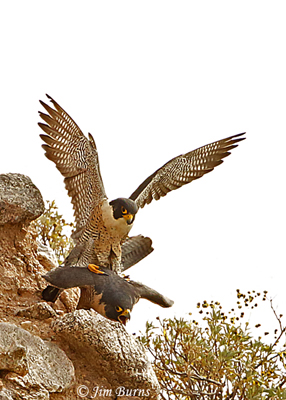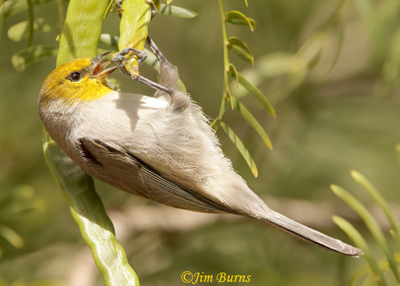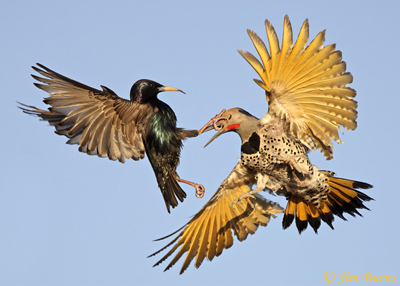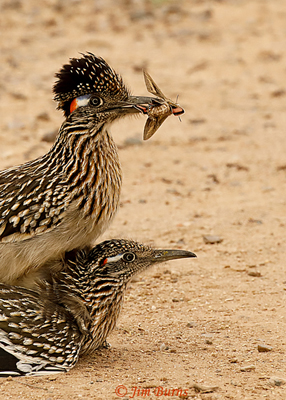
Of the hundreds of Peregrine images I have taken over the years, this one is my favorite, not because it is the anthropomorphic opposite of “blood and guts” nor because it captures a seldom seen scene from the falcon’s breeding cycle. Rather, for me, the fascinating reveal here is an unrealized evolutionary precaution on the part of the male. Notice he has rotated his tarsi inward so that his talons do not damage his mate as they copulate. Would that the males of our species were so considerate of their mates, metaphorically speaking of course.

This image reveals classic Verdin foraging behavior as it hangs upside down from a Mesquite bean pod. The bird’s left foot is holding onto the top of the pod for stability and security as it squeezes the bottom of the pod with the toes (talons) of its right foot, forcing out a caterpillar hidden there and securing it with its beak. You could be observing this action on a field trip as you snack on the cheese stick you’re squeezing into your mouth from its cellophane wrapper.

This single and singular frame, just one moment in the skirmish, has slown the action and speaks to both the intent and the intensity of these spectacular aerial battles. Both birds have deployed their alulae, like the flaps on an airplane, to slow their flight and maintain position, and their legs are extended, claws at the ready. As the starling rakes at the woodpecker’s face, we can see that the flicker has drawn its nictitating membrane to protect its eye. This is existential avian mayhem!

One common roadrunner misconception is that only the males show red on the bare skin behind the eye. In fact both sexes may show red there, though it is usually covered by feathering. It is thought the red shows out only when the birds become excited. You may supply your own off color joke here, but then imagine how “athletic” a bird must be and how sensitive and flexible its bill to capture and carry multiple flying insects at one time. For a more in depth read about this iconic species, check out this link-- https://jimburnsphotos.com/pages/greaterroadrunnertheiconicavianathlete.html

It is fairly common to capture a grebe having captured a fish, certainly their most sought and utilized food source, but I was lucky here to be on the scene when the morning sun had warmed up the waters of a fishing pond enough for pairs of mating Black-Saddlebags to begin looking for shallows where the females could oviposit. It had never occurred to me that large grebes might take odonata on the wing. I did not witness a successful capture, but I saw several attempted leaps from the water.
All birders, no matter the level of their passion or expertise, are anxious to find the next wonderful thing. Often that might just be what the bird at which you’re looking does next. Slow down, hang out, and get the complete picture. The rest of the story may be the most wonderful thing.